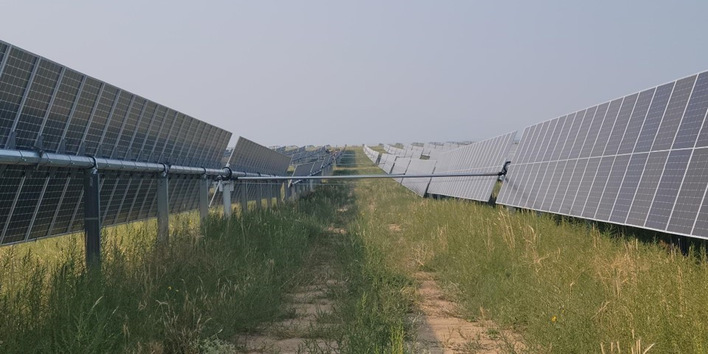Seavolt technology (patent pending) can withstand harsh offshore conditions while creating large surfaces that are protected from the waves, the consortium announced. The modular design allows for easy adaptation to different sites and demands. Benefits include local renewable energy production and the possibility to install the panels in offshore windfarms (where local authorities permit multi-use concessions). Another advantage is the addition of large volumes of renewable energy capacity in a relatively short time.
Test installation to be launched off the Belgian coast
The partners, together with Ghent University, started the VLAIO-funded (the Flemish government’s Agency for Innovation & Entrepreneurship) research project MPVAQUA (Marine PV Aquaculture) within the frame of Blue Cluster four years ago. A marine floater concept was developed together with initial research on effects on the marine ecosystem, integration of aquaculture, and a financial assessment. Following laboratory testing, the partners are currently developing an offshore test installation which will be launched off the Belgian coast in summer 2023. Furthermore, parallel tracks focusing on the ecosystem, the environment and cost effectiveness are being launched with the support of the Energy Transition Fund and the Federal Relaunch Fund.
Offshore Solar and offshore wind energy are complementary
The interest from the PV sector in offshore locations stems from land scarcity, combined with the need for local production and rapid acceleration of the energy transition. Photovoltaic technology is developing faster than ever: The “magic” 1-TW milestone of installed capacity was reached in 2022, the need for local renewable energy production is increasing drastically, and the complementarity between wind and solar technology has been confirmed all over the world. As authorities allow for multi-use concessions and the grid infrastructure shows good potential for combined use, the addition of offshore floating solar to current and future offshore wind sites presents an opportunity to add large volumes of additional renewable energy.
Did you miss that? Cooperation for offshore solar projects
“In the same way that we have seen wind technology moving from land to the sea, we are seeing the extension of the whole energy system towards offshore locations. Along with offshore green fuel production, offshore energy islands, interconnectors, and potential solutions for energy storage, we believe offshore floating PV has an important role to play in the acceleration of the energy transition. While this technology is still in its infancy, we are convinced that with such strong partners on board we are giving Seavolt all possible chances to succeed”, Philippe Van Troeye, Tractebel CEO said.
“Deme has decades of knowledge about what it means to operate in an offshore environment, and we are already the leading contractor in the offshore wind sector. We believe combining solar and wind energy offshore provides fantastic opportunities for the future”, Luc Vandenbulcke, Deme CEO stateted. "We are thrilled to launch the Seavolt technology, which represents the culmination of years of hard work and innovation in offshore PV technology together with our partners”, Philippe Hutse, Offshore Director at Jan De Nul Group, added. (hcn)
Also interesting: Offshore floating PV: Sun meets the sea







